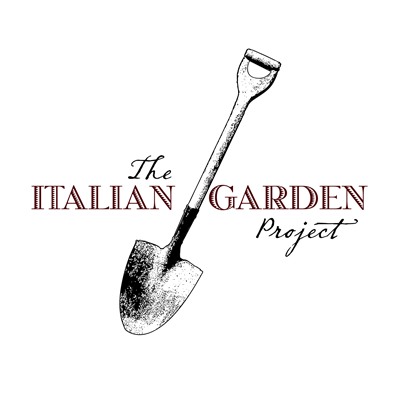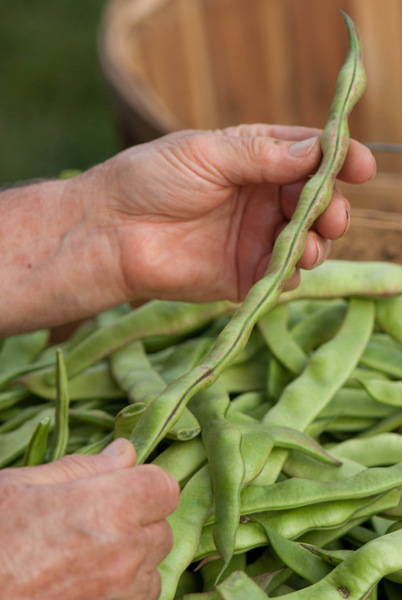A Bounty of Beans
Food this good is why people have gardens. With every bite, I kept thinking, “Yes, this is why they work so hard. They grew up with food like this, living without it would be torture.” Just a simple dish of Roma beans, new red potatoes, olive oil, garlic and basil. It doesn’t get any more basic, old world and delicious than this. It’s the kind of food that filled the bellies of hungry contadini (farm workers) throughout history and how lucky they were. Green beans so tender they melt on your tongue but with enough body and meatiness that when paired with new red potatoes can serve as a meal in itself.
This dish is made even more nutritious and hearty by including some of the plump, inner beans that have matured in the pods (as seen above). If left on the vine to mature to this state, the outer shell becomes too fibrous to eat and only the inner beans called turduni are used.
I left Marietta’s with a watermelon-sized bag of green beans and turduni under my arm the other day, all snapped, shelled and ready to cook. She had a huge bowlful in the kitchen that she had probably spent considerable time preparing. “That’s enough, that’s enough,” I kept saying as she scooped handful after handful into the bag, then asked me to hold the bag open while she poured in the final contents of the bowl.
It’s the height of bean season and the plants are producing fast and furiously and if you have row after row…
…and literally walls of beans, you pick, snap, shell, cook, eat, and… repeat… and still have plenty to share.
After harvesting bushels of beans, the process of sorting them is almost an art form. The tender, young beans are to be cooked without shelling, beans that are a bit more mature are shelled as turduni, and beans that have already begun to dry will be saved for seed or used as dry beans later in the winter. I’ve seen Fenice Mercurio (above) engaged in the sorting process.
And Anna Volpe patiently tried to explain the finer points of sorting using her many varieties of beans as they hung on the vine.
But it wasn’t until I sat down with Tommasina earlier this week and actually participated in the sorting ritual that I truly got the hang of it.
Tommasina grows three kinds of flat Roma beans. I’ve learned not to ask the names of the different varieties and instead have begun to recognize them by sight and description. There are the flat yellow ones and the ones with the purple speckles,
and the one she refers to as Australian. She calls it that because it’s from seed given to her by her sister who lives in Australia, even though it originally came from their hometown in Italy. Because many of the vegetables that are grown in the gardens of native-born Italians are from seed that has come from their villages and has been saved and handed down for generations, there aren’t necessarily universally recognized names for the vegetable varieties. Rather, they are identified by who gave them the seed or what the vegetable looks like.
I often see bottles and jars labeled like the one above that refer to who gave the seed originally. Mr. Villella has been planting and saving these seeds since he left Italy decades ago. He said that every time he plants them he thinks of his aunt, “Zia Mice” (pronounced Zee-a Mee-chay) who gave them to him before he left for America.
The Italian Garden Project is working with a local seed saving collective to produce some of our Italian gardeners’ heirloom seeds and make them available for purchase through our website, but until then you can purchase Roma flat bean seeds through our friends at The Heirloom Seed Store.













